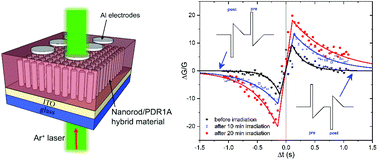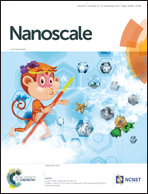Reversible optical switching memristors with tunable STDP synaptic plasticity: a route to hierarchical control in artificial intelligent systems†
Abstract
Optical control of memristors opens the route to new applications in optoelectronic switching and neuromorphic computing. Motivated by the need for reversible and latched optical switching we report on the development of a memristor with electronic properties tunable and switchable by wavelength and polarization specific light. The device consists of an optically active azobenzene polymer, poly(disperse red 1 acrylate), overlaying a forest of vertically aligned ZnO nanorods. Illumination induces trans–cis isomerization of the azobenzene molecules, which expands or contracts the polymer layer and alters the resistance of the off/on states, their ratio and retention time. The reversible optical effect enables dynamic control of a memristor's learning properties including control of synaptic potentiation and depression, optical switching between short-term and long-term memory and optical modulation of the synaptic efficacy via spike timing dependent plasticity. The work opens the route to the dynamic patterning of memristor networks both spatially and temporally by light, thus allowing the development of new optically reconfigurable neural networks and adaptive electronic circuits.



 Please wait while we load your content...
Please wait while we load your content...